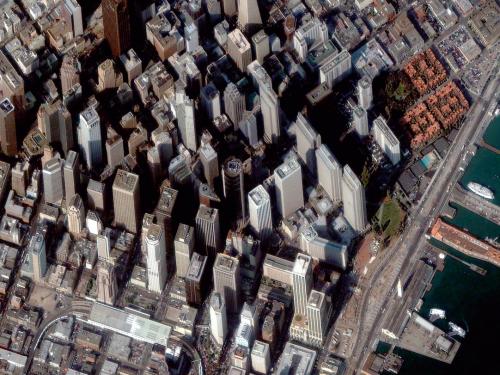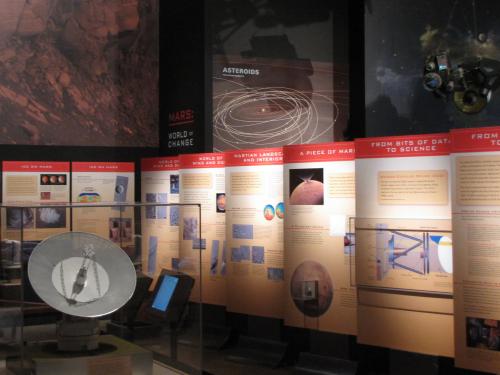
Stories of daring, stories of technological feats, stories of prevailing against the odds ... these are the stories we tell at the National Air and Space Museum. Dive in to the stories below to discover, learn, and be inspired.
Showing 101 - 110 of 111

July 09, 2011
Moonbeams, rockets, and Blue Angels are not just showcased in the National Air and Space Museum — they are in the garden too!

May 20, 2011
Since Howard McCurdy and I co-authored Robots in Space: Technology, Evolution, and Interplanetary Travel (Johns Hopkins University Press, 2008), I have been interested in the possible merger of humans and robots into a single entity to undertake space exploration.

April 08, 2011
Most people know that satellites in orbit do useful things such as collect images of the Earth's surface. At the National Air and Space Museum I use satellite images in my job to understand changes in the Earth's land surface.

March 18, 2011
On March 18, 2011, at 8:45 pm EDT, MESSENGER became the first spacecraft ever to enter Mercury's orbit. In this blog, Tom Watters reflects on the importance of this achievement.

October 05, 2010
“Remote sensing” is a term used to describe many different types of observations carried out at a distance. Aerial photos, satellite images of the Earth and planets, and telescope views of our solar system are all forms of remote sensing used to understand geology, climate, hazards, and changes over time.

June 22, 2010
President Obama’s “Educate to Innovate” campaign, announced last year, calls for increased literacy in science, technology, engineering, and mathematics (STEM) for all students. Increased STEM literacy means increased understanding of key scientific concepts, increased familiarity with technology and its applications, and increased exposure to the experimental process. As one of the world’s most popular museums, our stories of science, technology, engineering, and mathematics are engaging and relevant to old and young visitors alike.

April 15, 2010
The Exploring the Planets Gallery has been updated to include scientic exlporation of Mars. See what's new!

December 16, 2009
To get to Antarctica, I first flew on commercial flights from Washington, D.C. to Christchurch, New Zealand. While in Christchurch, I picked up special gear for the cold and harsh conditions in Antarctica from the US Antarctic Program Clothing Distribution Center. Several days later, I boarded a C-17 plane bound for McMurdo Station, Antarctica. In November, the temperatures are still cold enough that the sea ice surrounding McMurdo is used as a runway for aircraft. As I first stepped off the plane in Antarctica onto that expansive sheet of snow-covered ice, I was greeted by a blast of icy air, biting wind, and an amazing view of Mt. Erebus, the southernmost historically active volcano. It was so beautiful, it almost took my breath away!

December 01, 2009
I first became fascinated with glaciers during two summer seasons in Alaska while working on a cruise ship as a harpist. I would perform in a lounge at the top of the ship surrounded by windows and would watch in awe as we sailed past glaciers in Glacier Bay National Park as I performed.

September 08, 2009
First of all there is a question of just what to call this device. Is it a “dummy”? That’s what its creators called it sometimes, but that sounds too pejorative and does not give credit to its complexity. Is it a “robot”? That’s what it looks like. Or is it an “android,” defined by the dictionary as “an automaton made to resemble a human being”?